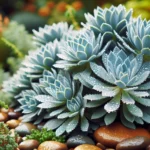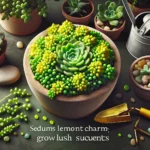Unveiling the Beauty of Sedum Dasyphyllum
In the vast tapestry of succulent plants, there lies a tiny, yet dazzling gem known as Sedum Dasyphyllum. Originating from the rocky crevices and cliff-sides of Western and Southern Europe, this charming perennial has captured the hearts of garden lovers worldwide. With its alluring powdery blue-green foliage, which can blush to a soft purple under stress or cold, it paints a serene landscape in miniature. Its compact habit, forming dense mats of tiny leaves, distinguishes Sedum Dasyphyllum from its more vertically inclined cousins.
Imagine a frosted carpet delicately draped over your garden rocks and borders. Come spring and early summer, this ground-hugging marvel bursts forth with clusters of starry white flowers, adding a sprinkle of celestial magic to your outdoor retreat. Gardeners adore this hardy trooper not only for its drought-tolerance but also for the ease with which it melds into creative landscapes, from fairy gardens to living roofs. It’s the little details that make Sedum Dasyphyllum a jewel in the crown of your garden.
For those seeking to add this gem to their collection, incorporating it into a thriving succulent tapestry is a joy. The Sedum Dasyphyllum, with its modest canopy, invites other silhouettes to align, such as the statuesque Echeveria Agavoides or the spreading trail of Crassula Capitella. Integrating these variations creates a living mosaic that is both visually stunning and ecologically sound. The Sedum Dasyphyllum, in its tranquil splendor, is a testament to the beauty that thrives in simplicity and resilience. When it comes to creating your own slice of Eden, this Corsican Stonecrop is a testament to the fact that the best things often come in small packages.
For a more immersive experience, take a moment to watch this video showcasing the art of propagating Sedum and witness firsthand the potential of these robust little wonders in your green oasis.
Ideal Growing Conditions for Thriving Corsican Stonecrop
When it comes to nurturing a lush, verdant patch of Sedum Dasyphyllum, or Corsican Stonecrop, imagine yourself as a gardener in the craggy, sun-drenched cliffs of the Mediterranean. Here lies the key to replicating the idyllic setting that this plump, blue-green jewel of a plant calls home. So, let’s dive into the nitty-gritty of soil, light, water, and temperature needs to transform your garden into a Corsican Stonecrop paradise.
Soil: The Foundation of Vitality
Think about those natural rocky nooks where our resilient Sedum Dasyphyllum thrives—well-drained soil is a non-negotiable. Opt for a gritty, sandy blend that mimics those coastal havens. A dash of perlite or pumice can upgrade your regular soil mix to a well-aerated, drain-happy haven, ensuring the roots are snug yet never soggy, reducing the risk of dreaded root rot.
Sunlight: Bask in the Glow
The Corsican Stonecrop is a sun worshipper just shy of joining a tanning competition. A golden rule for your sedum sanctuary is generous sunlight; however, they’re not sticklers for perfection. If the scorching afternoon sun becomes too intense, Sedum Dasyphyllum won’t hold a grudge if you provide some dappled shade to shield its delicate foliage. Just remember, without enough sun, your stonecrop won’t sparkle with that healthy blush of colors it’s famed for.
Water: The Art of Sips, Not Gulps
Now, let’s talk watering. Picture each succulent leaf as a tiny reservoir, storing moisture like a camel preparing for a desert trek. This is your cue for a watering regime that’s more ‘sips’ than ‘gulps.’ Allowing the soil to dry out completely between waterings is crucial; think of it as letting your stones in the garden bask in a drought, only to welcome a revitalizing rain shower that reinvigorates without overwhelming.
Temperature: The Warm Embrace
Our Sedum friend loves the warm embrace of thermal comfort ranging from 65 to 75 degrees Fahrenheit. While the plant is fairly hardy and can tolerate some chill, frost is a fierce foe. If Jack Frost is lurking, prepare to shelter such delicate succulents indoors or under the canopy of a protective cloche. After all, they’d much prefer a Mediterranean breeze over a frosty chill!
As a visual treat, and to give you a closer look at how to provide these ideal growing conditions, let’s take a peek at ‘How to care for Sedum Plants’—a video that captures the essence of nurturing Sedum Dasyphyllum in all its glory.
Sedum Dasyphyllum Propagation Mastery
Are you looking to add some Corsican Stonecrop sparkle to your garden? Propagating Sedum Dasyphyllum is not only rewarding—it’s a delightful dive into the world of these resilient succulent jewels. Let’s walk through the propagation techniques that will multiply your Sedum collection with finesse.
Seed Sowing Simplicity
Starting Sedum Dasyphyllum from seeds is a test of patience but equally a testament to the miracles of nature. Sow your seeds in a well-draining soil mix and gently sprinkle them on the surface. Keep them moist, not soggy, and in a spot with bright, indirect light. It may take several weeks, but once these tiny jewels sprout, the feeling of creation is unparalleled!
Cuttings: Quick and Effective
Perhaps the most satisfying method of propagation? Stem cuttings! Snip a healthy piece, let the end callous over for a day or two, and plant it in that perfect succulent mix you’ve got. Within no time, those roots will reach out, anchoring a new beginning. True plant enthusiasts have shared stories of cuttings thriving with the slightest of care, making it an excellent option for newbie gardeners too.
Division: Double the Delight
As your Sedum Dasyphyllum matures, it’ll potentially clump, giving you a fantastic opportunity to divide and conquer. Gently tease apart the root ball and separate the cluster into smaller sections. Each one is a potential new plant, ready to grow and grace another corner of your or a friend’s garden, providing a personal touch to plant-sharing traditions.
And don’t forget, each propagation journey is unique. Sometimes, a cutting that seemed hopeless may surprise you by blooming into a stunning specimen. Or a seed you forgot you planted might be the first to break through the soil, eager to greet the world. Delve into our wide array of insights on succulent types and characteristics for further exploration into this resilient plant family.
Remember, propagation isn’t just about following steps; it’s about building a connection with your plants, understanding their needs, and watching them thrive under your care. So, go ahead, give it a try and watch the magic happen, right in your own backyard.
Year-Round Care Schedule for Sedum Dasyphyllum
The radiant Corsican Stonecrop, or Sedum Dasyphyllum for those botanically inclined, thrives with a little TLC and a calendar of care. Let’s map out how to pamper your Stonecrop for each season, turning routine maintenance into a year-round botanical soiree that keeps this jewel in tip-top shape. Are you ready to get gardening-savvy? Let’s dig in!
Spring into Growth
Ah, spring! The world is blooming, and so is your Sedum. It’s the season of growth sprees, so trim any winter-weary parts, and let’s revitalize that soil. A recital of fresh potting mix that’s well-draining and packed with nutrients hits the right note. Imagine how your Sedum, budding with enthusiasm, will join the symphony of spring blossoms!
Discover more general succulent care tips that can elevate your nurturing game.
Summer Sizzle and Shade
Summer sizzlers mean sun hats for us and a spot of shade for your Sedum. While these succulents soak up the sun, too much of a good thing can lead to a crispy chorus of leaves. Position your plant where it’ll get partial sun – like an encore performance of morning light followed by a mellow matinee of afternoon shade. And don’t forget to water when the topsoil feels like a dry theatre – just before the act of drought stress begins!
Autumn Observations
When autumn’s paintbrush colors the landscape, it’s time to play detective. Examine your Sedum for any signs of pests or diseases, as prevention is the key to a healthy season. Your plant’s performance doesn’t need to be affected by unwanted critters. Consider this the intermission where you look after the props and stage for the next act.
And here’s a bit of real-life drama for you: I once spotted an aphid ensemble attempting to stage a takeover on a friend’s Sedum. Quick action and some environmentally friendly pest-control ensured the show could go on!
Winter Wellness
As winter casts its frosty spell, your Sedum Dasyphyllum will take a graceful bow and enter dormancy. It’s the proverbial nap time for the plant, but don’t let your vigilance snooze. Keep the watering sparse to prevent any root rot dramas, and ensure the plant is away from chilling drafts. It’s like tucking in a child with a cozy blanket, where you’re the protective gardener ensuring sweet dreams until the spring encore.
Whether you’re a seasoned gardener or a budding enthusiast, learning to care for your succulents can be a rewarding and visually stunning experience. Take a moment and enjoy this informative video which beautifully illustrates some general tips for succulent care, which also applies to our prized Corsican Stonecrop.
With each season, your Sedum Dasyphyllum will grow and change, much like nature’s own living sculpture. By following this care schedule, you’re sure to have a flourishing, radiant jewel that brings a touch of Corsica’s charm to your home or garden.
Landscape Design Ideas Featuring Sedum Dasyphyllum
Imagine a swath of blue-green jewels spilling across your garden, weaving a tapestry of tranquility and low-maintenance beauty. That’s the magic Sedum dasyphyllum, also known as Corsican Stonecrop, brings to the table. As versatile as it is enchanting, this succulent can elevate your landscape design with creative flourishes that will have passersby stopping in their tracks.
Rock gardens yearn for a plant like Sedum dasyphyllum, with its ability to mimic the flow of water as it nestles snugly among stone crevices and boulders. Picture it cascading down a rocky slope, each chubby leaf glimmering like a droplet of morning dew. By planting this sedum in nooks and crannies, you create an alluring, naturalistic setting that suggests a narrative of a gentle creek frozen in time. And rock-dwellers like ‘Lemon Ball’ Sedums accompany it beautifully, with their contrasting colors making each other pop.
Ground cover? Say no more. Sedum dasyphyllum spreads effectively, discouraging weeds and providing a lush carpet that requires minimal attention. However, don’t let its delicate appearance fool you; this succulent is tough as nails, handling drought like a champion. Imagine stepping stones leading through a sea of this ground-hugging treasure, creating a serene path that invites you on a meditative walk every time you set foot in your garden.
Not to be outdone, container gardening is yet another stage for this versatile performer. Whether in a hanging basket, where those blue-green rosettes can trail elegantly, or in a mixed container display, Sedum dasyphyllum shines. Set a potted arrangement as a centerpiece on your outdoor dining table, and watch as it becomes a conversation starter. It’s the sort of plant that compels you to reach out and touch its fleshy leaves, and it never shies away from the attention. Just look at this 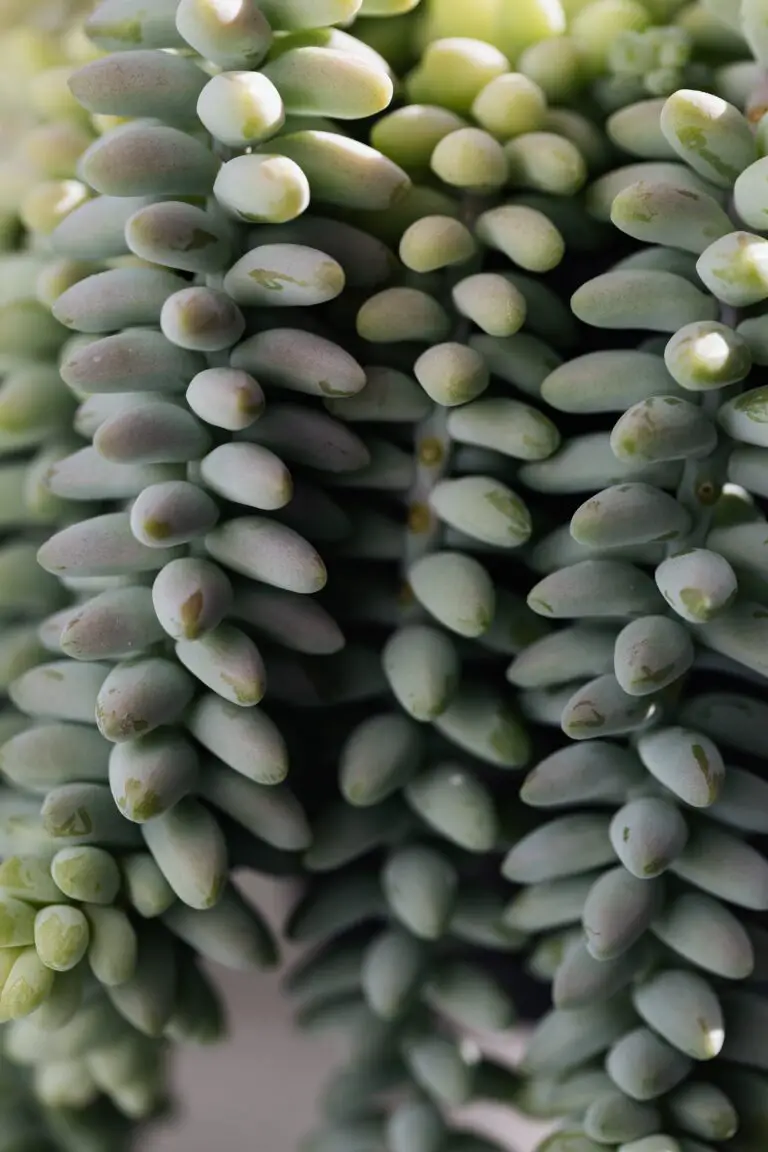 and tell me it doesn’t whisper a tale of low-key elegance.
and tell me it doesn’t whisper a tale of low-key elegance.
From rock gardens to ground covers, and container displays to potted centerpieces, Sedum dasyphyllum offers a versatility that’s hard to beat. By embracing its easy-going nature and allowing it to flourish in your landscape, you’re not just planting a succulent; you’re cultivating an experience, an oasis of calm, and a statement of natural beauty that resonates with every glance.
Common Challenges and Effective Solutions
As the proud cultivator of Sedum Dasyphyllum, often known as Corsican Stonecrop, you understand the joy of seeing those plump, blue-green leaves flourish in your garden. However, even the hardiest jewels have their kryptonite. In this journey to maintain and protect your Stonecrop, you may encounter a few roadblocks—pests and diseases being the main culprits. Let’s arm ourselves with knowledge and tackle these issues head-on!
Pesky Pests
Imagine walking out to your garden, coffee in hand, only to find that mealybugs have invited themselves to a feast at the expense of your sedum’s health. These tiny uninvited guests suck the sap from the leaves, leaving behind a telltale cottony residue. To boot them out, consider introducing their natural predators like ladybugs, or apply a neem oil solution to bid them farewell.
And let’s not forget about the snails and slugs, shall we? These slippery critters can nibble your sedum overnight. But fear not, a barrier of diatomaceous earth around your plants can act like a security guard, deterring these mollusks from turning your garden into a salad bar.
Fighting Diseases
On the disease front, overwatering can lead your Sedum Dasyphyllum down a slippery slope to root rot. It’s a sneaky one – you might not know it’s there until your sedum’s vibrant leaves start wilting. The prevention here is simple: let’s stick to a watering schedule that mimics the dry conditions of their native habitat. Allow the soil to dry out completely before giving it another drink. And if root rot does strike, swift action by removing the affected parts and repotting in fresh soil can save your plant’s life.
Fungal infections can also crash the party, manifesting as unsightly spots on the leaves. To keep fungi at bay, maintaining good air circulation around your plants is key. This might mean spacing out your sedum or giving them a trim if they’re looking a bit shaggy.
To help us visualize how to keep our tough little sedum thriving amidst these challenges, let’s dive into this informative video:
Remember, Sedum Dasyphyllum is a resilient gem in the plant kingdom. With these proactive measures, you can ensure that your garden remains a verdant oasis, free from the grip of pests and diseases. So, keep a vigilant eye, stay consistent with your care routine, and watch your Corsican Stonecrop thrive!
The Environmental Benefits of Planting Sedum Dasyphyllum
Quietly thriving in the cracks of a stone wall, or sprawling with grace over rocky terrain, Sedum dasyphyllum, more poetically known as the Corsican Stonecrop, holds ecological treasures beneath its fleshy, dewdrop-like leaves. This unsung hero of the plant kingdom is more than just a visual delight; it’s a cornerstone species in establishing healthy, resilient ecosystems. Let’s unearth its environmental benefits, shall we?
Biodiversity Booster
When Sedum dasyphyllum enters the scene, it’s like throwing open the windows to a stuffy room—diversity flows in. These plants create microhabitats where a multitude of organisms can thrive. Insects find homes among their leaves, birds feed on the seeds, and an array of microscopic beings prosper in the soil enriched by this living tapestry. The ripple effect? A more diverse and balanced environment, resilient in the face of climatic upheavals.
A Haven for Pollinators
Imagine a Sedum dasyphyllum basking in the sun, its clusters of starry flowers a beacon for bees, butterflies, and other pollinators. These tiny creatures dance from bloom to bloom, sipping on nectar while unconsciously performing the vital act of pollination. It’s a symbiotic ballet where every participant flourishes—a reminder of nature’s delicate interdependencies.
The Green Shield Against Erosion
Erosion is a relentless force, stripping the land of its nutrients, but Sedum dasyphyllum stands as a verdant bulwark against this natural adversary. Its robust root system binds the soil, arms extended, while its succulent leaves slow the journey of rainwater, averting the loss of precious topsoil. It’s nature’s own erosion control expert, deployed on slopes and banks, safeguarding the very foundation of our ecosystems.
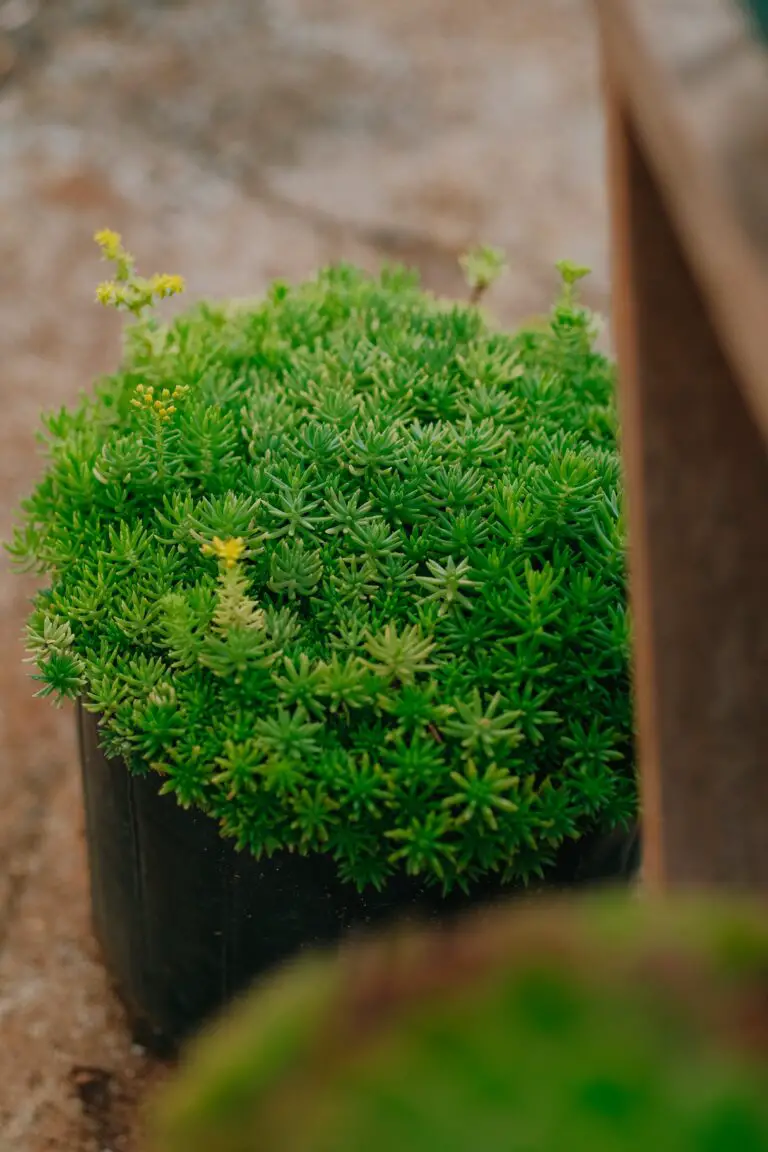
As we delve into the virtues of Sedum dasyphyllum, it’s clear that this humble succulent is more than meets the eye. By fostering biodiversity, nourishing pollinators, and protecting our land, the Corsican Stonecrop emerges as a jewel not just in aesthetic appeal, but as an environmental benefactor. It beckons us to acknowledge the smaller players in our ecology, those that create the foundations for life to persist and thrive.
Showcasing Stunning Sedum Dasyphyllum Varieties
When it comes to creating a lush tapestry of succulents in your garden or home, Sedum dasyphyllum, affectionately known as the Corsican Stonecrop, is a jewel among its kind. But this gemstone-like plant isn’t the only character in the play of textures and hues. Picture a palette of tiny, robust plants, each variety a unique brushstroke contributing to a masterpiece. Let’s delve into a world where miniature marvels meet low-maintenance care.
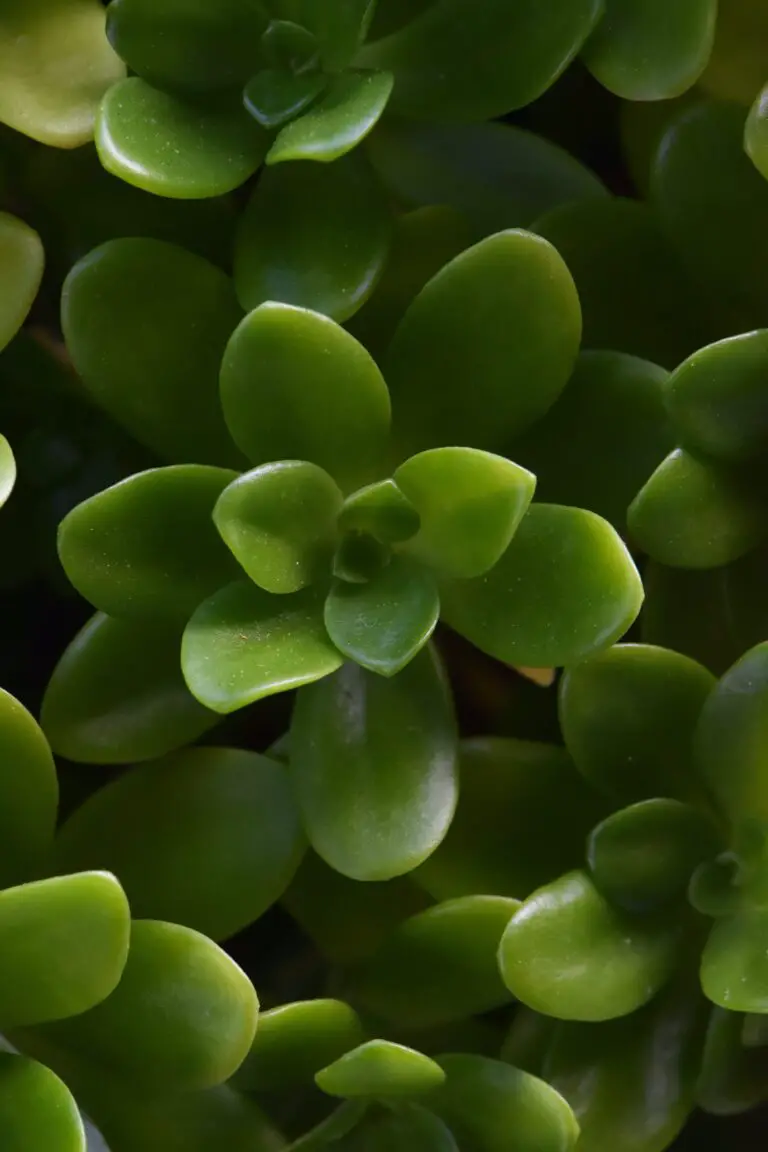
Imagine the ‘Major variety’, like a cluster of tiny, opal pebbles, radiating a bluish-gray hue. It’s almost as if you were gazing into a rock pool, serene and still under the summer sun. Then there’s the ‘Minor variety’, a daintier counterpart yet equally enchanting. Its leaves, tinged with undertones of lavender, curl into rosettes, evoking the illusion of miniature roses sculpted by nature’s deft hand.
Each Sedum dasyphyllum variety brings its own flair to the garden stage. For instance, ‘White Cloud’ is a picture of wintry elegance. Even on the coldest days, it emanates a warm glow, the silver-green foliage dusted with a creamy accent. Contrast that with ‘Bronze Carpet’, which as its name suggests, weaves a tapestry of foliage that transitions from green to bronze with the kiss of the sun.
Real-life examples abound in the versatility of these varieties. Take the ‘Turquoise Tails’, a variety that could easily be the star of a succulent fairy garden. Its almost mythical-sounding name is apt for its other-worldly appearance. Or picture the ‘Blue Tears’, weeping gentle trails of silvery-blue that cascade over the edges of containers, balconies with a view of the urban skyline, or stone walls that meander through cottage gardens.
The spellbinding allure of these varieties lies not just in their aesthetic, but in their harmonious lifestyle. They are siblings in care, asking for little yet giving so much. Sunlight is their best friend, and overwatering their foe. In homes where busy lives may forget the need to nurture, these Sedum varieties patiently wait, resilient and enduring.
As gardeners, we weave our own stories with these hardy performers. Whether you’re an urban dweller with just a balcony to your name or a suburban green thumb with acres to spare, there’s a Sedum dasyphyllum variety waiting to take root in your life story. Accept the invitation to explore, and watch your garden narrative unfold.
Frequently Asked Questions

Ever wonder how Sedum Dasyphyllum, also known as the Corsican Stonecrop, thrives in those seemingly impossible nooks and crannies? It’s a real-life David and Goliath story—tiny but mighty!
What’s the ideal environment for Sedum Dasyphyllum?
Think Mediterranean holidays! Sedum Dasyphyllum basks in the full sun to partial shade and loves a well-draining dance floor. Too much water? That’s a big no-no. Imagine you’re in Corsica, this little gem’s namesake—rocky, sun-kissed, and breezy.
How do you propagate these succulent beauties?
It’s like a magic trick—pluck a leaf, lay it on soil, and abracadabra, roots! Okay, it might take a little longer than a magic show, but with patience, you’ll see tiny succulent soldiers emerging.
When does Sedum Dasyphyllum bloom and what does it look like?
When summer hits, Sedum Dasyphyllum throws a party, and you’re invited to its blooming bash! Delicate flowers in whites and pinks pop up, adding a sprinkle of color to your rock gardens or containers.
Any common pests to watch out for?
Despite its tough exterior, Sedum Dasyphyllum isn’t immune to the sneak attacks of mealybugs and aphids. Keep a vigilant eye, and if trouble arises, it’s time for organic insecticidal soap to enter the battlefield!
Is Sedum Dasyphyllum safe for pets?
In the contest of toxicity, Sedum Dasyphyllum secures an impressive victory. It’s pet-friendly, so your furry friends can frolic without fear!
Remember, this is a plant that loves its personal space. Pop it into that sunny spot by the window or tuck it into a cozy crevice outdoors and watch as it transforms into a green gem amongst stones. With a pinch of patience and your newfound knowledge, cultivating Sedum Dasyphyllum can be a verdant voyage of tiny triumphs!
Maximizing Health and Longevity
Fostering a flourishing Sedum Dasyphyllum, also adored as the Corsican Stonecrop, begins with understanding its unique needs. Renowned for its resilience and captivating beauty, this succulent expresses its full potential when proper care is applied. Let’s embark on a journey to ensure your green gem thrives, showcasing a tapestry of turquoise hues and plush foliage.
Nourishing with Precision: Fertilization Fundamentals
Imagine your Sedum Dasyphyllum as a connoisseur of nutrients, savoring a balanced meal rather than indulging in a feast. The key to fertilizing this modest jewel lies in moderation. A half-strength, balanced fertilizer suits it best—think 10-10-10 NPK ratio—delivered sparingly during its growing season. As autumn kisses the leaves goodbye, so should you with the fertilizer, allowing your sedum to rest and prepare for winter.
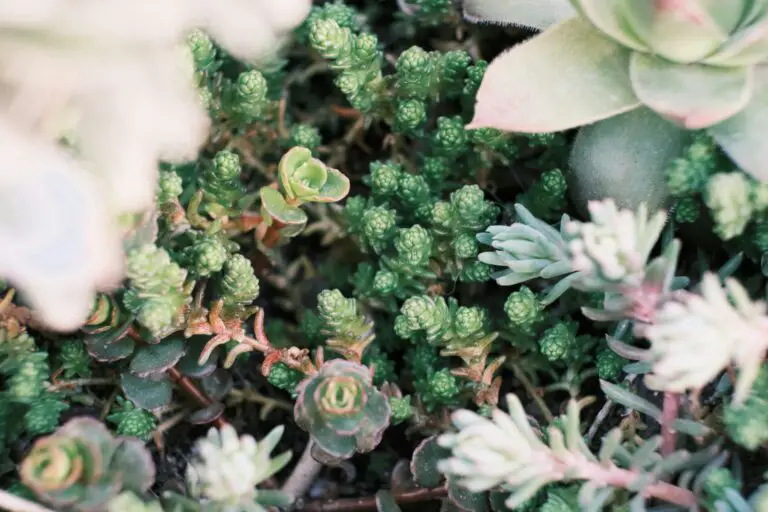
The Art of Repotting: Timing and Technique
A Sedum Dasyphyllum’s abode is its sanctuary; hence, selecting the right moment to repot is an art. When roots peek through the drainage holes as if seeking new horizons, it’s time. Spring, the season of new beginnings, is ideal for this transition. Choose a pot only slightly larger than the current, as a cavernous new home could drown the roots in excess soil and moisture. Carefully cradle the sedum, respecting its roots, and nestle it into well-draining soil specifically curated for succulents.
Safeguarding Vigor: Tips for Long-term Health
An emblem of longevity, Sedum Dasyphyllum will reward your care with years of luscious growth if you heed its simple requests. Ensure its life is bathed in bright, indirect light—an overture to robust health. Water thoughtfully, soaking when the soil is dry and never allowing its feet to sit in water. Keep an eye out for pests, though rare, they’re easier to combat when spotted early. As your sedum prospers, occasionally prune any overzealous stems to maintain its compact elegance. Remember, a contented sedum is a sight to behold, a living sculpture in your garden for years to come.
